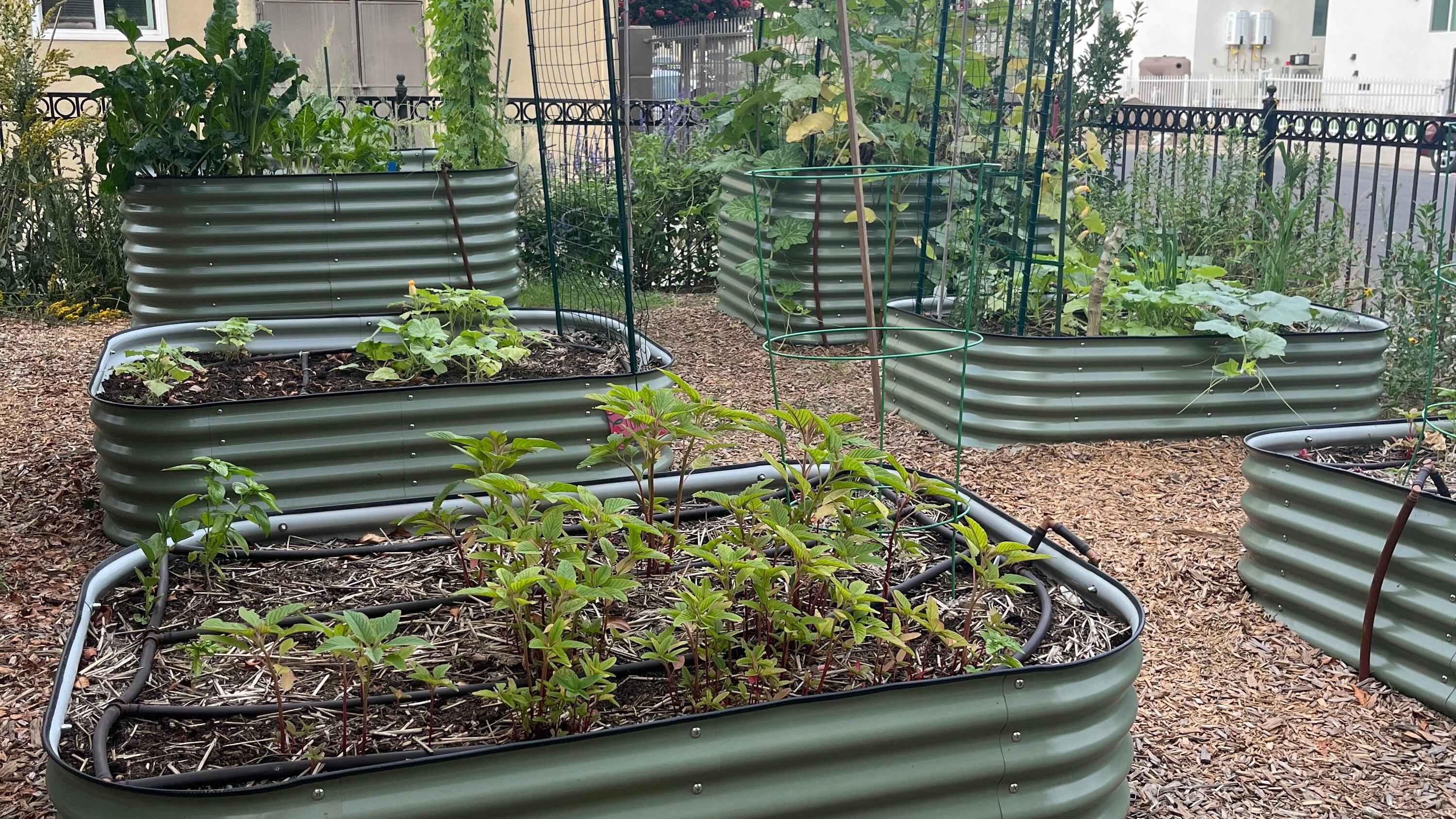In a campus surrounded by a concrete jungle, there are not many places where students can escape to nature other than Exposition Park and the beaches. However with the help of USC Sustainability, and the Chan Division of Occupational Science and Occupational Therapy, the USC Peace Garden is looking to give students a green escape from the city.
That was the mission of founder Camille Dieterle, a professor of Occupational Therapy, who intended the Peace Garden to be “a place to connect to nature in the heart of the city.”
“I started the Peace Garden with a grant from my department, the Chan Division of Occupational Science and Occupational Therapy,” said professor Dieterle. “As the garden grows, I hope that more and more people enjoy it as a place to relax, connect to nature and learn about plants and sustainability. Each year we will add additional programming.”
USC, however, is not the only Los Angeles-based school to develop a peace garden. Loyola Marymount has had one since 2013, and is a quiet but very prevalent attraction on campus.
Sophomore biology major Diana Church Phiper and Freshman acting major Jayden Adams-Ruiz, two students who were already at the garden heard about the Peace Garden through an email about USC Green Week. “This is really cool, I love urban gardens so I’m just going to come and check it out,” said Adams-Ruiz on how he found out about the Peace Garden.
Located at 3017 Shrine Place, the Peace Garden is just a short walk off campus. While it has just opened its gates this semester, it is already gaining some foot traffic from students looking for peace and nature. Adams-Ruiz and Phiper told Annenberg Media they were both more than happy to journey out past the Shrine to the Peace Garden. “I want to make this a weekly thing, like I come back every Tuesday, this is the Peace Garden.” said Adams-Ruiz.
Phiper was also pleasantly surprised by the Peace Garden saying “It’s a lot more than I thought it would be.”
While the USC center for sustainability loves pockets of students coming and going, they aim to get larger student-led groups and organizations to visit the Peace Garden.
Mikayla Hisamoto, a fifth year architecture major and intern with USC sustainability, says “we are planning ahead in the next few months to do more student groups, walkthroughs and more specific events, but recently it’s just been visitors who just see our Instagram and want to come by and help out with maintenance around the garden.”
Some of Hisamoto’s personal goals as an intern for the Peace Garden include spreading the word out on campus about the Peace Garden as well as looking for more collaborative work with groups whether they are on- or off-campus collectives.
While Hisamoto keeps the garden functioning, while the garden’s landscape was designed by USC graduate student Daniela Velazco, Master of Landscape Design + Urbanism candidate. The garden’s flora and fauna is filled with many California’s native plants, however it also includes some more well known herbs and fruits including, basil, lemongrass, pumpkins and even a still growing tomato plant.
Though the garden’s plants are the main attraction, the USC Peace Garden is more than just a place where students can feel one with nature. The Peace Garden center provides a plant adoption center, where students may take home plants. Students can find the gardening and plant care tips they need on the Peace Gardens Instagram.
For those who follow the Peace Gardens Instagram, they are looking for two mural entries to add to their scenery. Artists will be provided with up to $300 worth of supplies.
While the Peace Garden is new to the USC community, it is already falling under favor with the student body as Adams-Ruiz pointed out “it’s so sweet and nice... it’s just great.” The Peace Garden is open on Mondays and Wednesdays from 3-6 p.m., as well as from noon to 1 p.m. on Wednesday, and Tuesdays and Thursdays from 5-6 p.m. and is ready for more involvement with the student body.
